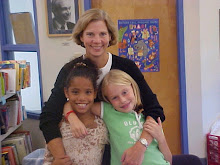Our alumni are amazing folks.
After Parker about half of our kids go to public schools and about half to independent schools. 95% go on to college - many to top tier schools and that's impressive. But it is what they do with their educations that is most important. After college their stories vary widely: from the Peace Corps to the diplomatic corps - from PhD programs to tech start-ups.
These are interesting people, committed to making a difference in the world - where ever they land.
Associate Director and art teacher, Susie Merrett, who has been at Parker since the beginning, recently sent our alumni a Facebook message, "What are you up to?" She has had wonderful responses.
From the Parker class of 2010 to the class of 1997, below is a teaser of some of their stories. To read more about our interesting grads, CLICK HERE!
Elana Cohen ‘10: Hey Susie! I’m at Cornell and currently studying to go to medical school; right now I’m planning on a double major in English and biology with a concentration in molecular biology and a minor in fine arts. If you need anything else let me know!
Aaron Banks ‘98: Hi Susie and fellow Parker alumni, After graduating from Tufts University, I moved to Washington and worked in politics and advocacy, including on Barack Obama’s 2008 campaign and as Campaign Manager for the anti-global poverty advocacy organization ONE. In 2010, I joined the Foreign Service and have had diplomatic posting in Washington, New York, Yemen, and London, where I am now half-way through a great two year tour.
Molly Mulligan ‘97: I finished my PhD At UMass Amherst in 2011




